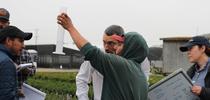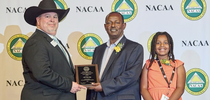Welcome UC ANR Employees!
Announcements
Employee Spotlight
Calendar
ANR Update
Reminder: Science-to-Practice Grant Program 2024-25 request for proposals
UC Agriculture and Natural Resources is accepting proposals to the Science-to-Practice (S2P) Grant Program through Monday, Sept. 30, 2024. Full proposals must be submitted as a single PDF by 11:59 p.m. on Sept. 30, 2024. Proposals are to be emailed to...
UC ANR Climate Notification
Dear UC ANR Community,
As we begin the 2024-2025 year, I want to reaffirm our UC ANR Principles of Community and ensure that all members of our community understand both the rights and the responsibilities of free expression in the UC ANR context.
This...



